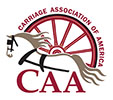We often receive requests to identify sleighs. Unfortunately unless there is a maker’s tag on the sleigh it is hard to identify exactly where the sleigh came from. In general, American sleighs fit into two broad categories – Albany and Portland.
The Albany Cutter

As the 19th century began there was a focus on more practical winter vehicles. The gold gilded sleighs featuring wild animals and mythical creatures were not practical on the streets of small town USA. Art was still an influence but it no longer drove design. The desire for a beautiful but practical sleigh was particularly strong with James Gould of Albany, New York. He began to develop a swell-sided cutter, the primary design coming into being about 1836. The Albany body and runners were carefully steamed and bent into their unique shape, requiring a master craftsman. Known by a variety of names the design was quickly copied by other sleigh makers. The Albany Cutter (or Albany Sleigh) is recognized as the second most popular sleigh type in America.
The curved body was a painters paradise an rich colors were used to decorate the sleighs. The Hub reports that dark or light carmine, yellow, blue, even Scotch plaid and purple were used on the body. Trimming was often dark green or crimson. Somewhat sadly, the October 1878 edition of The Hub mentions that “it was formally the custom of sleigh-builders to employ a variety of fancy colors, stripes, ornaments, etc. but of late years plainness and simplicity have been preferred by city customers.”
Albany Cutters vary in size from single horse and pony sleighs to six passengers sleighs pulled by four horses. Larger sleighs with swell bodies are sometimes referred to as Hudson Valley Sleighs.
The Portland Cutter or Kimball Sleigh

The most popular sleigh in America was designed by Peter Kimball of Maine. It was his sons, James M. (of Portland, Maine) and Charles P. (of Chicago) who championed the sleigh. The straight back offered more wind protection than the Albany and was less expensive for carriage makers to create.
In 1876 Charles P (C.P. Kimball) moved to New York to begin a partnership with Brewster & Company. The aptly named Kimball-Brewster Sleigh, which was shown at the Centennial International Exhibition of 1876 in Philadelphia, the first official World’s Fair in the United States. Charles chose to move to Chicago the following year with his son, Charles Frederick, where they started the famed carriage company, C.P. Kimball & Company.
Sleigh races were very popular in the United States and Portland Cutters were an early favorite. They gave way at the turn of the 20th century to specially made racing sleighs. By 1910, a standard Portland Cutter could be purchased for $20. One ornate Portland Cutter built by Kimball & Clement was trimmed in “silk plush, had silver mountings and cost $150.”
Portland Cutters typically seat two people but were also made to seat four. As time progressed they were available with doors, hoods and other features that just were not possible with the Albany.

Written by Kathleen Haak for the Carriage Association of America. Based on “Highlights of Sleighing History” by Kathleen Haak which appeared in the January 2019 edition of The Carriage Journal.
